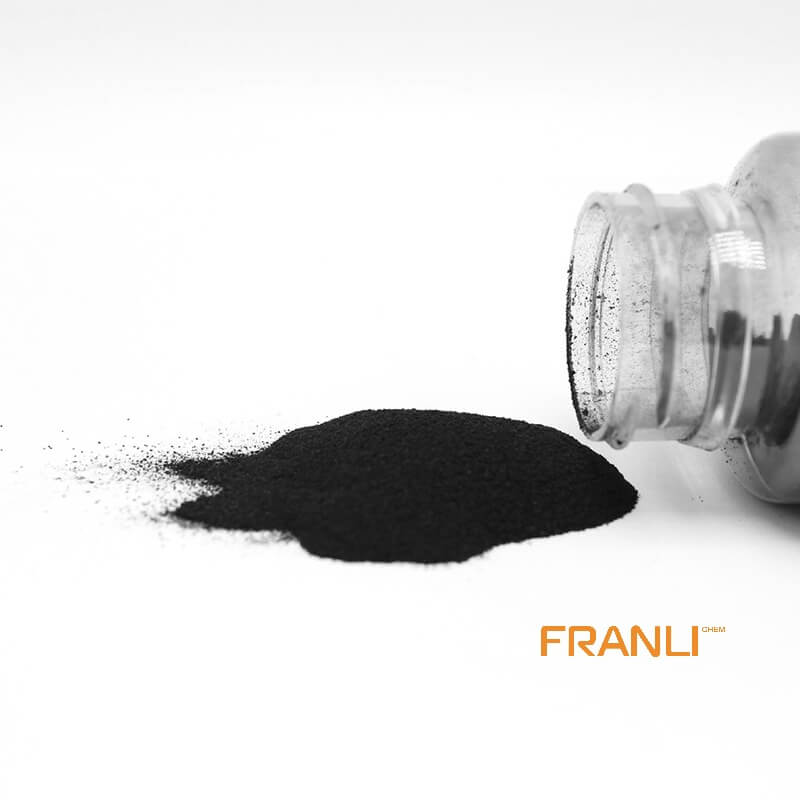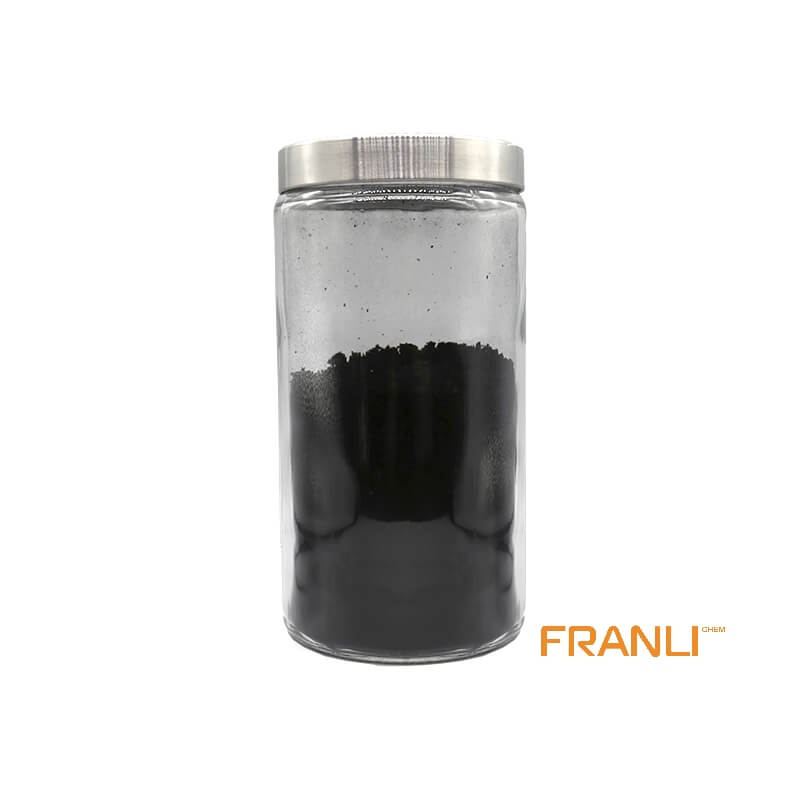

Graphene
Size
1-2nm thick x 0.5-5microns wide
Package
According to customer requirements
Features
High strength, high electrical conductivity, etc.
Application
Can be used as filler(between 0.01% and 5%).
Graphene, as the thinnest, toughest and best conductive nano material found at present. It is a two-dimensional crystal composed of carbon atoms stripped from graphite material with only one layer of atom thickness. Known as “black gold”, it is “the king of new materials”. Scientists even predicted that graphene “will completely change the 21st century”.
Request a quote
Graphene has excellent electrical properties, strong thermal conductivity, large specific surface area, high fracture strength, and toughness, as well as unique properties. Graphene has broad application potential in power, electronics, information, energy, materials, environmental protection, and other fields, which has aroused the research interest of many scientists in different fields. Graphene is similar to asphalt in structure and has excellent binding properties. It is considered that graphene’s excellent performance makes graphene asphalt can be comprehensively improved. This paper describes the application potential of graphene and studies the preparation process of graphene-modified asphalt.
Introduction
Graphene is a kind of two-dimensional carbon nanomaterials with a hexagonal honeycomb lattice composed of carbon atoms in an SP2 hybrid orbital. Graphene is very stable and has many excellent properties, such as ultra-high carrier mobility, electrical conductivity, thermal conductivity, light transmittance, strength, toughness, etc.
As a new type of nanomaterial, graphene has very unique excellent properties, showing great potential in polymer composites, conductive coatings, catalysts, supercapacitors, water treatment materials, and biotechnology, which has attracted extensive attention in recent years. In the field of transportation and civil engineering, the use of carbon nanomaterials to modify asphalt has long been a precedent. Graphene and asphalt have a similar structure, and they have excellent adhesion. The combination of graphene and asphalt can produce strong molecular force, and comprehensively improve the road performance of graphene asphalt.

1. Application of graphene
1.1 Application of graphene in the electrical field
The lithium-ion battery is the most popular cycle battery because of its high voltage and high specific energy. Graphene is a unique nanomaterial with a unique network structure, multi-stage pore structure, and excellent electrical properties, which can greatly improve the battery capacity and has broad economic prospects.
MIT has developed a new type of flexible and transparent solar cell, which is realized by a new method of depositing a single atom thick graphene layer on the solar cell. Graphene will not damage the nearby organic materials. Developers of transparent solar cells usually rely on expensive brittle electrodes, which are prone to rupture when the device is bent. The use of graphene makes truly flexible, low-cost, transparent solar cells possible.
To meet the needs of the continuous development of smart grid, mobile communication, electric vehicles, and so on, the power lithium battery Engineering Laboratory of Ningbo Institute of materials has developed a kilowatt class aluminum-air battery power generation system based on graphene air cathode. Its energy density, capacity, and output power are significantly improved. Graphene has great development potential in the field of batteries.
In coastal cities and industrial intensive areas, industrial waste gas and coastal air have serious corrosion effects on the surface zinc coating of transmission iron in State Grid, which seriously endangers the transmission safety of the power industry. Graphene has been used as an anti-corrosion coating and achieved remarkable results. Graphene is compounded with organic materials to form functional graphene polymer composites
(1) The conductivity of the conductor part of the cable is not consistent with the working strength;
(2) The outer layer of the cable has poor thermal conductivity, which is easy to cause security risks and lead to power grid security accidents;
(3) Improve the capacity and working intensity of DC energy storage equipment, and contribute to the establishment of clean and efficient power industry.
1.2 Application potential of graphene in highway field
In the field of transportation and civil engineering, the research of graphene functional composites mainly focuses on cement-based materials and carbon fiber. Graphene, as a two-dimensional nanocarbon material, has many excellent and unique properties. When graphene is applied to asphalt pavement, high-quality graphene asphalt can be prepared under the ideal condition of graphene, which can reduce the early damage of asphalt pavement, improve the quality of asphalt pavement and prolong the service life of asphalt pavement. The road performance potential of graphene asphalt is reverie.
In the case of huge traffic flow, traffic congestion and power consumption of road traffic facilities have always been the problems of road traffic. To help promote the construction of intelligent transportation in China and subvert the service performance of traditional roads, it is proposed to mix graphene into concrete to make concrete have electrical conductivity and external power transmission equipment to convert the pressure of vehicles on the road into electric energy, Output, and storage through external transmission equipment.
If this idea can be realized, graphene roads can be used as mobile charging sources for new energy vehicles, and clean energy power plants paved on roads can effectively solve the problem of power consumption for road traffic facilities, followed by the power supply for the areas where roads are located, Reduce the pressure of the power industry in the peak period. The clean energy generated by graphene road will cause the change of human energy resources, and its future development potential is huge.

2. Study on preparation technology of 2-graphene modified asphalt
2.1 problems of graphene dispersion
Graphene has a single complete six-membered ring structure, so there is a strong intermolecular force between graphene molecules, and the layers are easy to stack together, resulting in agglomeration. The surface of graphene is stable and inert, which makes it difficult to dissolve in basic solvents, and it is very difficult to functionally composite with other materials, which has become a huge problem in the application of graphene.
2.2 Countermeasures for decentralization
To improve the dispersion effect of graphene, the material with a better dispersion effect is selected, which is called surfactant. According to different surfactants and basic solvents, the optimal dispersion of graphene is also different. A fluorescence microscope and ultraviolet-visible spectrophotometer were used to determine the optimal amount of graphene.
When the well-dispersed graphene is mixed into the matrix asphalt, it is necessary to intercalate the graphene and asphalt to reflect the physical adsorption capacity brought by the huge specific surface area of graphene. The intercalation effect of the mixture of graphene and asphalt can only be produced under the cavitation effect of the ultrasonic instruments, sound flow effect, and uniform dispersion effect of emulsified asphalt high-speed shear, Comprehensively improving the performance of asphalt road.
2.3 Preparation technology
The mixture of matrix asphalt and graphene was treated by emulsified asphalt high-speed shear and ultrasonic cell crusher. Using uniform design method, the asphalt treatment capacity, shear time, rotation number, asphalt temperature during shear, time and power of high-intensity ultrasound, graphene content, surfactant, and basic solvent content were taken as the main influencing factors, and the three indexes, anti rutting factor and creep recovery rate were taken as response values. The model was established by using DPS and 1stOpt mathematical statistics software, The mixture ratio and preparation process parameters of graphene-modified asphalt were obtained.
Conclusion
(1) Graphene has many excellent and unique characteristics. In theoretical research and industrial application, graphene, graphene composites and graphene derivatives show great research and application value. At present, the production efficiency of the graphene preparation method is low, which seriously hinders the research and industrial application of graphene.
(2) Graphene and asphalt have an excellent combination, combined with the excellent performance of graphene, graphene asphalt has great research value.



